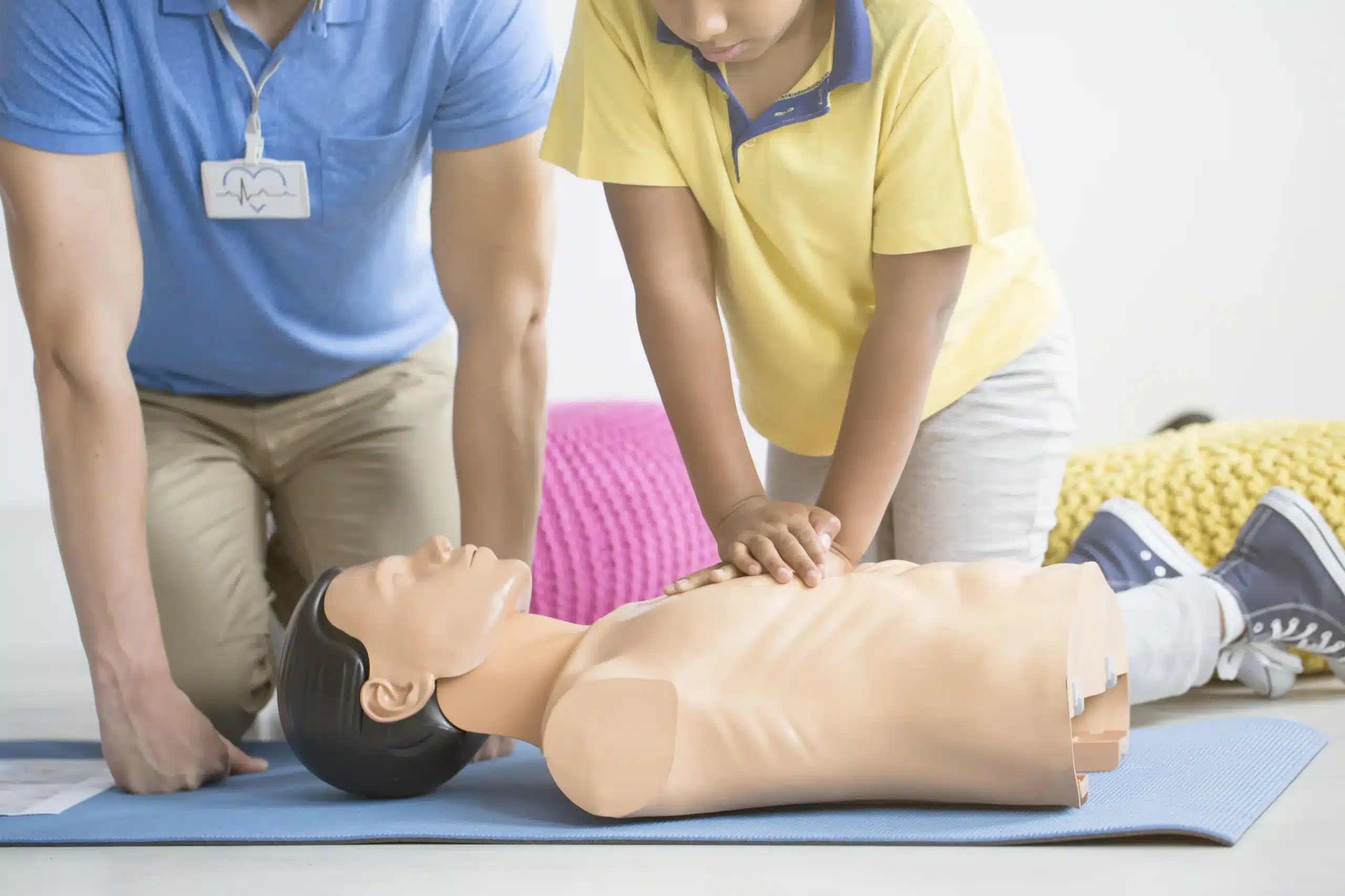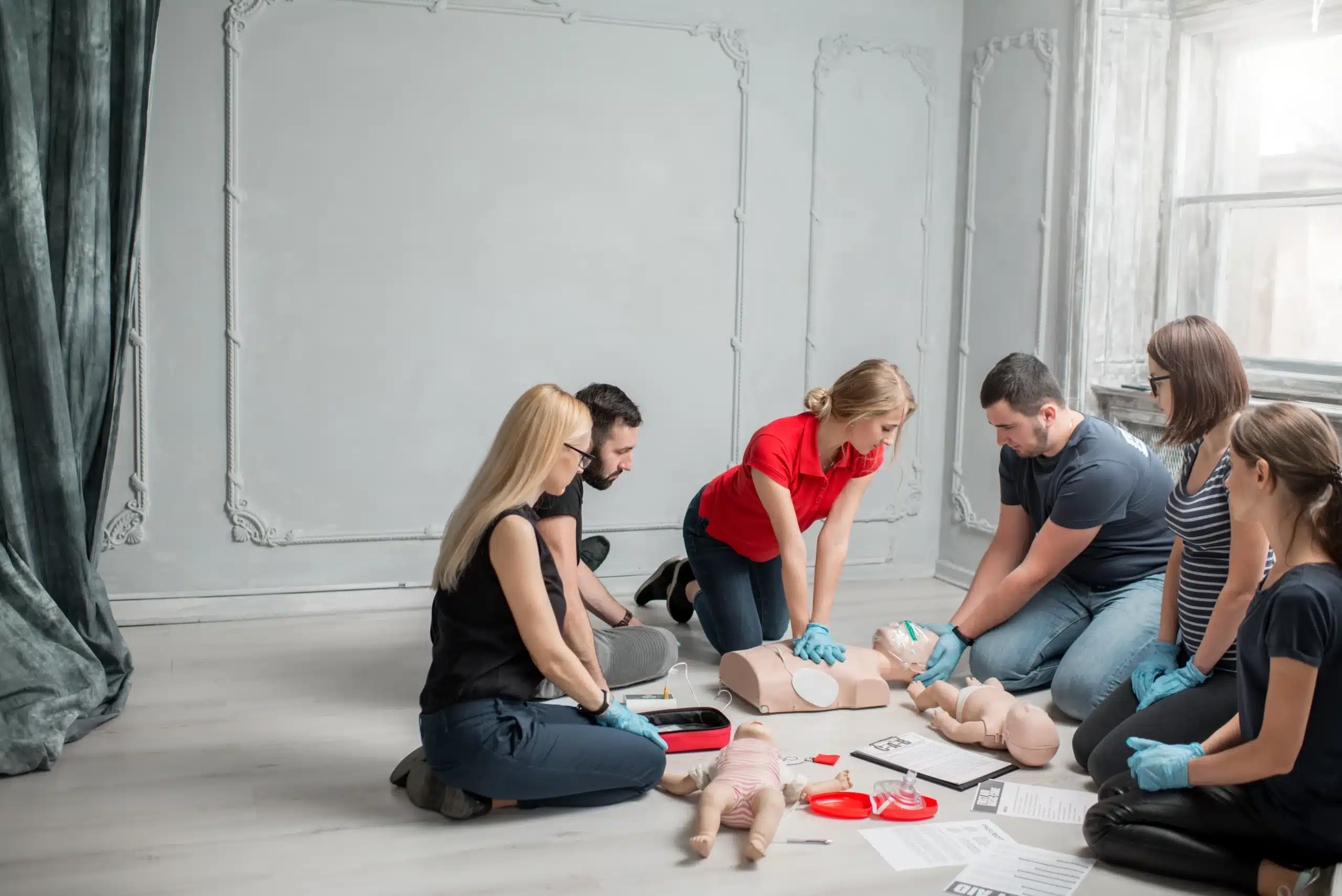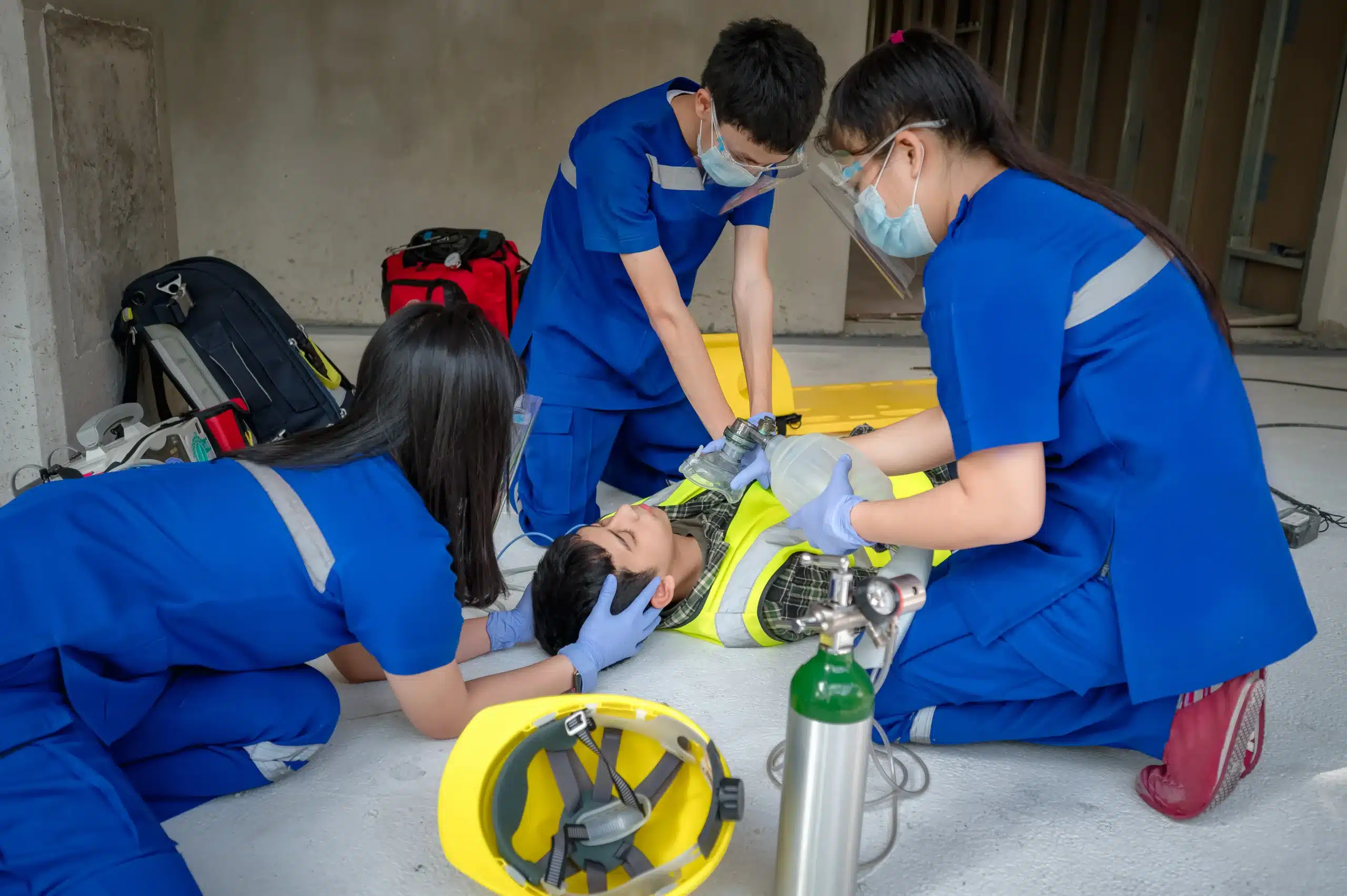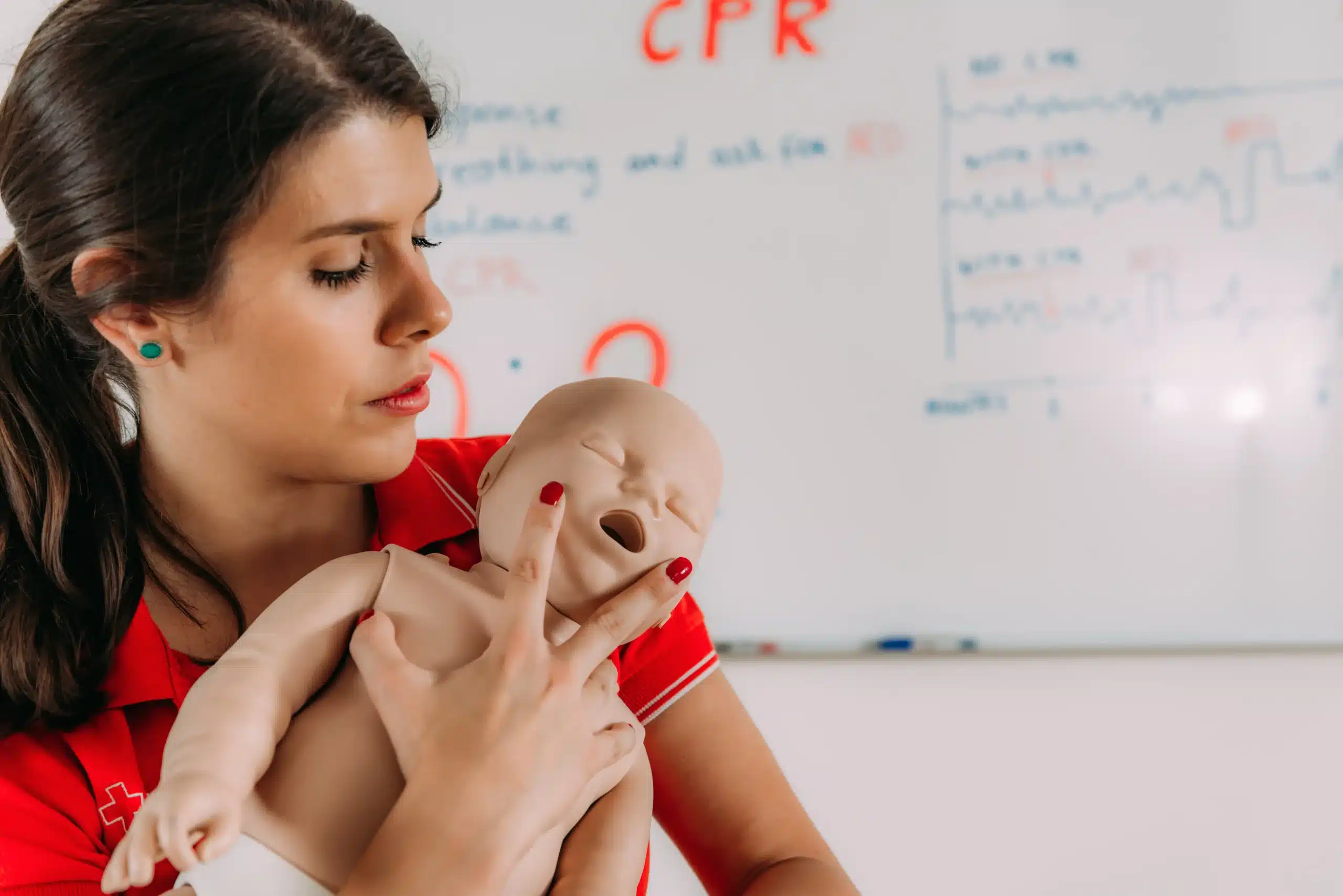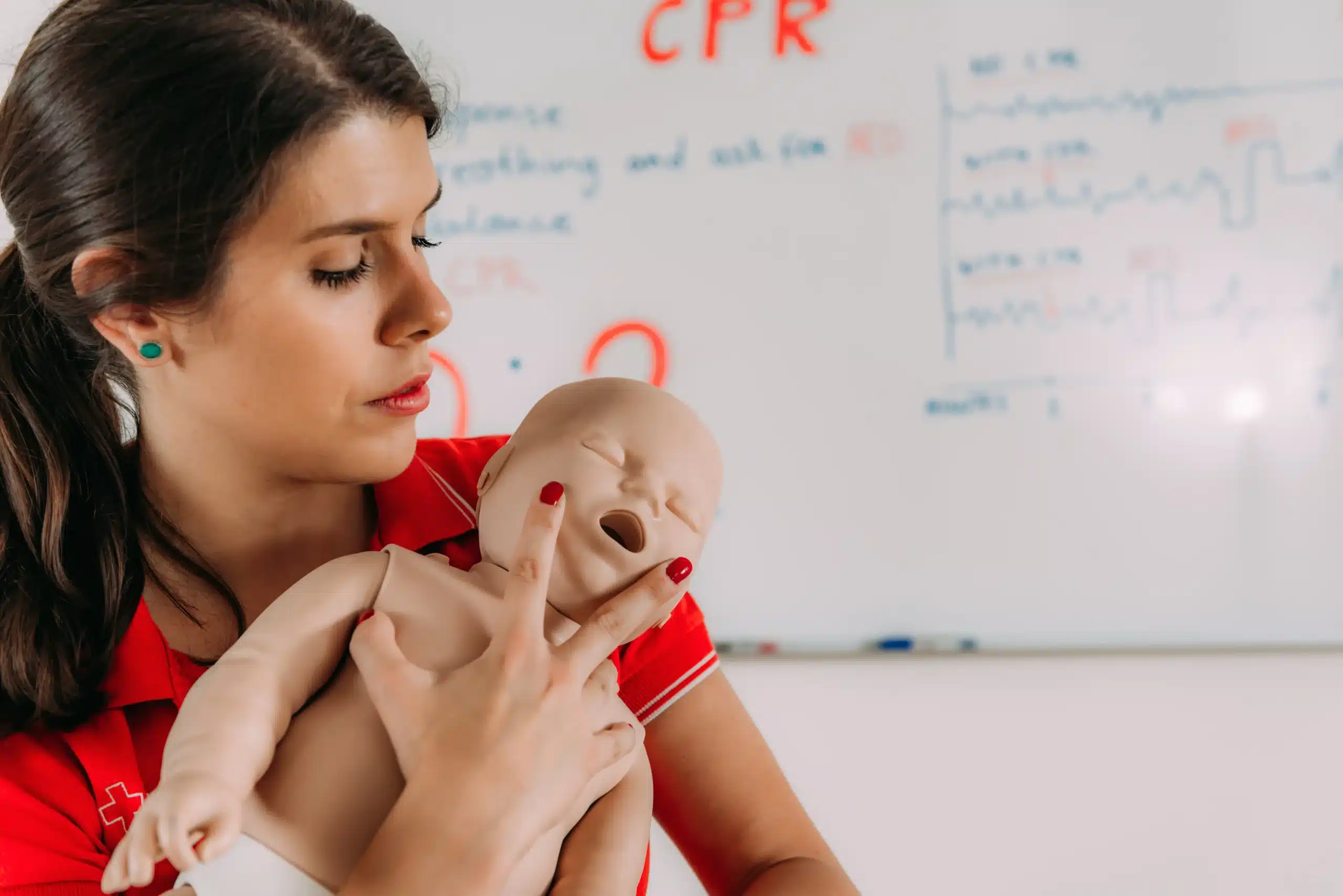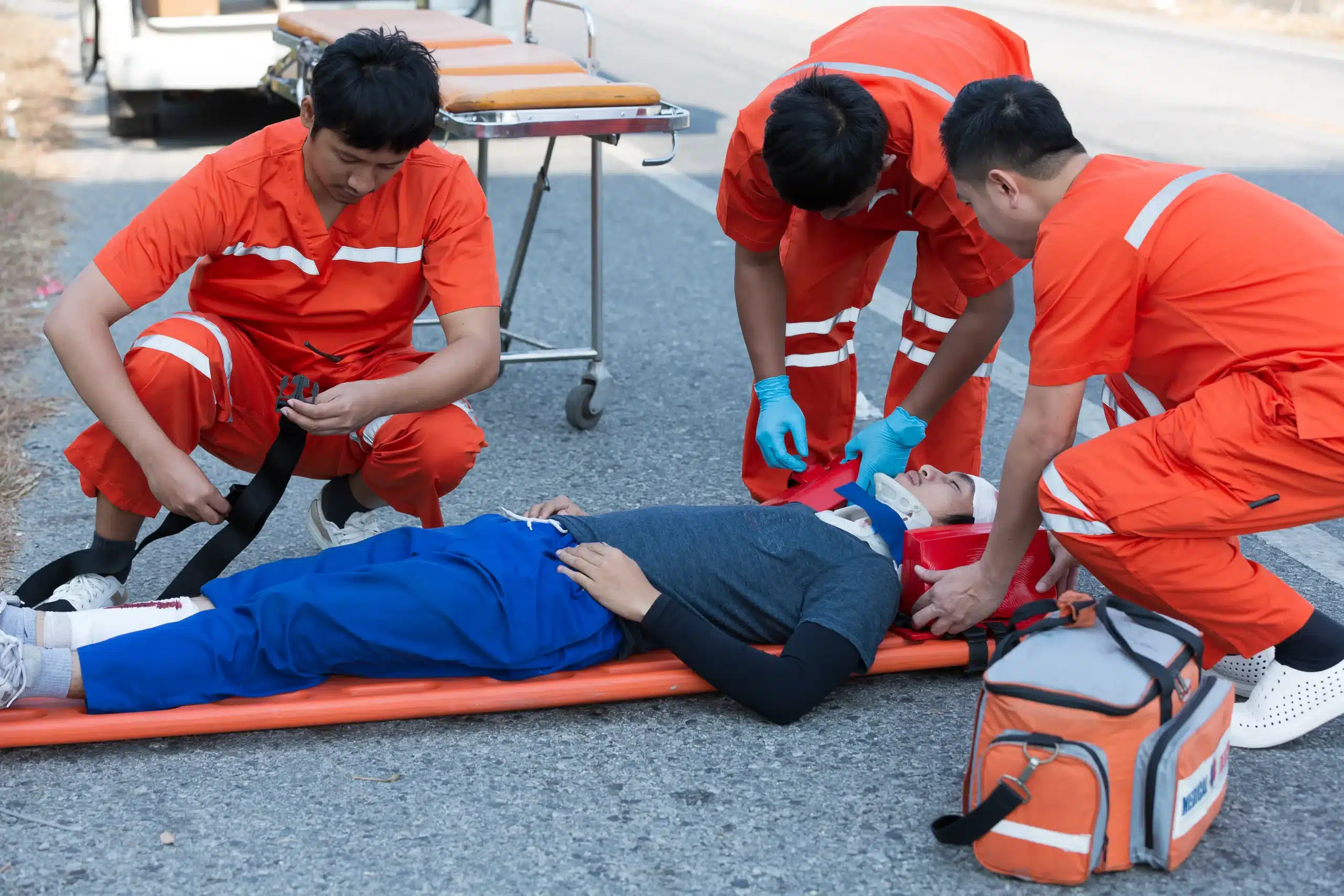Life with kids is full of surprises, and not all of them are pleasant. Scrapes, bumps, and more serious incidents are sometimes inevitable. But what if you could be the one who knows exactly what to do when a child needs help? This guide explores the importance of pediatric CPR and first aid in Fair Oaks, providing valuable resources for parents, caregivers, and anyone who wants to be prepared for emergencies involving children. We’ll cover where to find training in Fair Oaks, what skills you’ll learn, and how to maintain your certification. Empower yourself to be the calm and confident presence that can make all the difference in a critical situation. Learning pediatric CPR and first aid in Fair Oaks is not just about acquiring skills; it’s about building a safer community for our children.
Key Takeaways
- Pediatric CPR and first aid equip you to handle emergencies involving children. Find a class that offers hands-on practice and covers age-specific techniques.
- Convenient training options are available. Explore in-person and blended online formats to find a course that suits your schedule and learning style. Consider factors like location, instructor experience, and course content.
- Regular practice keeps your skills sharp. Refresher courses and staying updated on the latest guidelines ensure you’re always prepared to respond effectively.
What is Pediatric CPR and First Aid?
Pediatric CPR and First Aid classes teach parents, caregivers, and childcare providers how to respond to medical emergencies involving infants and children. These courses cover essential life-saving techniques like CPR, how to help a choking child, and treating common childhood injuries like cuts and burns. Because children’s bodies are different than adults, pediatric CPR uses techniques specifically designed for infants and kids. You’ll also learn to recognize and respond to a wide range of medical situations, from minor injuries to more serious emergencies. These courses often include hands-on practice, giving you the chance to build confidence and master these essential skills in a safe environment. This practical experience is invaluable for learning how to react quickly and effectively under pressure.
Why Pediatric CPR and First Aid Skills Matter
Knowing pediatric CPR and first aid can truly make a difference in a child’s life. Kids are constantly exploring, playing, and inevitably, sometimes getting hurt. Having these skills means you’re ready to step in when a child needs help, whether it’s a minor scrape or a serious emergency.
Pediatric first aid empowers you to take immediate action, which can be crucial in preventing complications. Learning how to control bleeding or clean a wound can make a big difference. Properly immobilizing a fractured bone, for example, can prevent further damage and alleviate pain. These skills also cover treating common childhood injuries like cuts, burns, and bruises—essential knowledge in any setting, but especially valuable in childcare, where minor accidents happen frequently. CPR and first aid training often complement each other, giving you a well-rounded skill set to handle various situations. CPR training is particularly important for childcare providers, who are responsible for the safety and well-being of young children in their care.
Beyond the practical skills, pediatric first aid training instills confidence. Knowing you can handle emergencies involving children brings peace of mind, not just for you but also for the families and communities you’re a part of. These skills make you a valuable resource for everyone around you. Pediatric first aid training is often a legal requirement in childcare, equipping individuals with the tools to respond quickly and potentially save lives. Stories abound of parents and caregivers who credit pediatric first aid training with saving a child’s life, highlighting the real-world impact of these skills. Learn more about pediatric first aid and how it can empower you to make a difference.
Find Pediatric CPR and First Aid Classes in Fair Oaks
Finding the right pediatric CPR and first aid class can feel overwhelming, but with a little research, you can find a course that fits your needs and schedule. Here are a few options to explore in and around Fair Oaks:
Safety Training Seminars: Your Local Expert
Safety Training Seminars offers a variety of in-person courses in nearby Carmichael, covering CPR, BLS, ACLS, PALS, and First Aid. This hands-on training builds confidence for real-life emergencies. Their location is convenient for those living or working near Fair Oaks. See if their class schedule works for you.
In-Home CPR: Convenient At-Home Training
If flexibility is key, In-Home CPR brings the training to you. Their EMTs and Paramedics travel to your Fair Oaks home or office to teach CPR, BLS, ACLS, and First Aid certification courses. This personalized approach works well for busy families or groups. Learn more about their in-home training. With no minimum number of students required, it’s a great option for small groups or individuals.
Professional CPR: Specialized Classes for Childcare Providers
Professional CPR offers various safety training courses in Fair Oaks, including specialized Pediatric CPR and First Aid certification. These courses meet California childcare licensing requirements, making them an excellent resource for childcare providers, nannies, and anyone working with children. Explore their pediatric training programs.
Carmichael CPR Classes: AHA-Certified Training
Carmichael CPR Classes, a woman-owned business, provides high-quality American Heart Association (AHA) certified courses, including CPR and First Aid. They offer a comprehensive curriculum, including BLS, ACLS, PALS, and more. Conveniently located in Carmichael, they serve surrounding areas, including Fair Oaks. Explore their AHA-certified courses and find a class that fits your schedule. With classes offered seven days a week, finding a convenient time is easy.
Class Formats and Topics
In-Person or Online?
Pediatric CPR classes are available in both in-person and blended online formats. This flexibility lets parents and caregivers choose the training method that best suits their schedules. In-person classes provide hands-on practice and direct interaction with instructors. Blended learning combines online coursework with in-person skills sessions. Both options cover essential information on caring for infants and children, taught by local experts using up-to-date methods.
Key Pediatric Skills
Learning pediatric CPR is crucial for parents and family members. These skills equip you to respond effectively in emergencies, giving you the confidence to act quickly when seconds count. The Pediatric First Aid AED CPR certification meets California childcare licensing requirements, making it a valuable qualification for caregivers. The course covers essential skills like choking relief and basic first aid for common childhood injuries.
Age-Specific Techniques: Infants, Toddlers, and Children
The techniques for performing CPR differ significantly between infants, children, and adults. Understanding these differences is essential for an effective emergency response. For example, the depth of chest compressions and the method for opening the airway vary depending on the child’s age. Pediatric first aid training empowers caregivers to take immediate, appropriate action, which can prevent complications in critical situations.
Meet the Instructors
When it comes to learning life-saving skills, the instructor’s expertise makes all the difference. At Carmichael CPR Classes, we understand this. We’re proud of our highly qualified instructors who are passionate about sharing their knowledge and experience.
Credentials and Experience
Our instructors bring a wealth of real-world experience to the classroom. They hold certifications in CPR, First Aid, BLS, ACLS, and PALS. They’re dedicated to providing comprehensive training that equips participants with the skills to respond effectively in emergencies. Beyond their technical expertise, our instructors create a supportive and encouraging learning environment where students feel comfortable asking questions and practicing their skills.
Medical Professionals as Educators
Many of our instructors are also working medical professionals, including EMTs, paramedics, and registered nurses. This direct experience in emergency medical services informs their teaching and provides students with practical insights. They understand the challenges and nuances of emergency response, and they share this valuable knowledge with their students. This hands-on experience translates to confident, capable students ready to act in the face of an emergency.
Benefits of Pediatric CPR and First Aid Training
Knowing what to do in a medical emergency can make all the difference, especially when a child is involved. Pediatric CPR and first aid training gives you the skills to respond effectively and confidently if such a situation arises. Let’s explore some key benefits of this essential training.
Build Confidence in Emergencies
Emergencies can be chaotic. Pediatric first aid training empowers you to take charge and provide immediate care, which can prevent complications. Instead of feeling helpless, you’ll have the skills to assess the situation and take decisive action. This training builds confidence, transforming you into a capable responder ready to handle a range of pediatric emergencies. You’ll also become a valuable resource for your family, friends, and community. Learn more about the importance of pediatric first aid.
Respond Quickly, Save Lives
Seconds count in a medical crisis. Pediatric first aid and CPR training teaches you to recognize warning signs and respond swiftly. Whether it’s a breathing issue, an allergic reaction, or a sudden injury, you’ll be prepared to administer crucial first aid promptly. This quick response can stabilize the situation and potentially save a child’s life. These skills are not just valuable; they are often a legal requirement for childcare providers in many areas. Learn more about CPR training for childcare providers.
Prevent Further Injury
Knowing proper first aid techniques can significantly impact a child’s recovery. Correctly immobilizing a fractured bone, for example, can prevent further damage and alleviate pain. Pediatric first aid training also covers how to treat common injuries like cuts, burns, and bruises, minimizing the risk of infection and promoting faster healing. Learning these skills allows you to provide effective care and prevent minor injuries from becoming major problems.
Register for a Class
Ready to learn life-saving skills? Registering for a pediatric CPR and first aid class is easy and convenient. We offer various options to fit your schedule and learning preferences.
Register Online
Many organizations offer online registration for CPR and first aid certification courses. This allows you to browse available class dates, times, and locations, and secure your spot quickly. Online registration is often the fastest and easiest way to sign up. For example, you can explore CPR and first aid options through Safety Training Seminars.
Sign Up In-Person
Prefer to register in person? Some providers, like Safety Training Seminars, may offer in-person registration at their training centers. This gives you a chance to meet the instructors, ask questions, and get a feel for the learning environment. You can also find providers who bring the training to you, such as in-home CPR classes.
Pricing and Discounts
The cost of pediatric CPR and first aid training varies depending on the provider, certification type, and course length. Many providers offer competitive pricing and discounts for groups, families, or organizations. Check with your chosen provider for specific pricing and available discounts. Safety Training Seminars offers a low price guarantee. Basic CPR and first aid training can range from $25–$70 per person, while more specialized courses like BLS certification may have different pricing.
What Happens in a Class?
Want to know what to expect during your Pediatric CPR and First Aid class? We’ve designed our courses to be engaging, informative, and practical, giving you the confidence to handle emergencies involving children.
Hands-On Practice and Scenarios
Our pediatric CPR and first-aid courses offer valuable hands-on experience. You’ll learn the essential skills for responding to various pediatric emergencies through interactive demonstrations and realistic scenarios. We cover everything from CPR techniques for infants, children, and toddlers to treating common childhood injuries like cuts, burns, and bruises. This practical training ensures you’re prepared to act quickly and effectively in a real-life situation.
Take-Home Resources
We equip you with the tools you need to continue learning even after the class ends. You’ll receive comprehensive resources, including a guide to creating a first-aid kit specifically designed for children. This kit should include essential items like bandages, antiseptic wipes, gauze, and potentially an EpiPen, depending on individual needs. These resources reinforce what you’ve learned and provide a handy reference for future situations.
Get Certified
Upon completion of the course, you’ll receive a nationally recognized certification in Pediatric CPR and First Aid. This certification validates your skills and knowledge, demonstrating your ability to provide immediate and effective care in emergencies, potentially preventing further complications. Pediatric first aid and CPR training is often a legal requirement for many childcare providers and professionals working with children. With our certification, you’ll be prepared to respond confidently and make a real difference when it matters most.
Maintain Your Skills
Knowing Pediatric CPR and First Aid is a powerful skill, but like any skill, it needs regular practice. Staying sharp means you’ll be ready to act quickly and confidently if an emergency arises.
Take Refresher Courses
Regular refresher courses are key to maintaining muscle memory and confidence in your Pediatric CPR and First Aid skills. Think of it like a tune-up for your lifesaving abilities. The Red Cross suggests a refresher at least once every three months. While free online refreshers can be helpful for reviewing the basics, consider taking an in-person refresher course periodically. Hands-on practice with a certified instructor offers invaluable feedback and helps solidify your skills. Check with Safety Training Seminars for available refresher courses in your area.
Stay Updated
Pediatric CPR and First Aid guidelines can change as new research emerges. Staying updated on the latest recommendations ensures you’re providing the most effective care. Resources like the Red Cross and the American Heart Association offer current guidelines and valuable information. Remember, having these skills makes you a vital resource in your community, so ongoing learning is essential. Staying informed benefits the children in your care and empowers you to be a confident and prepared caregiver.
Community Impact
Knowing how to perform CPR and first aid can make a real difference in your community. It empowers you to take action and potentially save a life, especially when it comes to children. Think of it as a ripple effect, starting with you and extending outwards to protect the little ones in Fair Oaks and beyond. Learning these skills provides peace of mind and strengthens the safety net within our community.
Fair Oaks Family Success Stories
While we can’t share specific local stories due to privacy, consider the impact of being prepared. Quick thinking and the right skills, like those taught in our CPR and first-aid certification courses, can prevent complications during emergencies. Learning pediatric first aid equips parents and caregivers to respond effectively, offering immediate care when it matters most. Stories like Sarah Davies’, highlighted by First Aid and Safety Training in their article on pediatric first aid, demonstrate the life-saving potential of these skills.
Local Support Resources
Fair Oaks has a network of resources dedicated to community safety. Carmichael CPR Classes offers various certification courses, including CPR and first aid, serving Carmichael, Rancho Cordova, and Fair Oaks. We even have a low price guarantee, making these vital skills accessible to everyone. For added convenience, In Home CPR brings training directly to homes and businesses in Fair Oaks. Professional CPR also serves Fair Oaks, providing a range of safety classes. While the Red Cross offers first aid classes in nearby Westfield, NJ, exploring local options like ours first ensures you’re receiving training tailored to the specific needs of our community.
Related Articles
- CPR Training in Rancho Cordova: Your Guide – Carmichael CPR Classes
- First Aid Training in Carmichael: A Complete Guide – Carmichael CPR Classes
- BLS for Healthcare Providers in Fair Oaks: Complete Guide
- Why CPR is Important in Healthcare – Carmichael CPR Classes
- Advanced Cardiac Life Support in Rancho Cordova CA
Frequently Asked Questions
What’s the difference between adult and child CPR? Adult and child CPR share the same core principles but differ in the techniques used. With children, you’ll use gentler chest compressions and may use only two fingers for infants. The methods for opening the airway and checking for breathing also vary based on the child’s age. Specific training in pediatric CPR is essential to learn these crucial differences.
How often do I need to renew my pediatric CPR and first aid certification? While certification validity varies, refreshing your skills every two years is generally recommended. Regular practice and refresher courses help maintain your confidence and ensure you’re up-to-date with the latest guidelines.
What if I’m uncomfortable practicing on a mannequin? It’s completely normal to feel a little hesitant at first. Instructors create a supportive environment where you can practice at your own pace. Remember, the goal is to build muscle memory and confidence, and the more you practice, the more comfortable you’ll become.
Are online pediatric CPR and first aid courses as effective as in-person classes? Blended learning, which combines online coursework with in-person skills sessions, can be a great option. It offers flexibility while still providing the essential hands-on practice. Fully online courses may lack the crucial hands-on component, so choose a format that includes in-person skills training.
What should I look for when choosing a pediatric CPR and first aid class? Look for classes taught by certified instructors with experience in pediatric emergency care. Check if the course covers age-specific techniques for infants, children, and toddlers. Consider the class format and choose one that fits your learning style and schedule. Finally, ensure the certification is recognized and accepted in your field if required for your job or profession.



